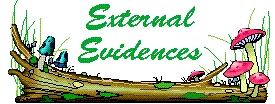

| Vol. 1, No. 12 | Page 4 | December 1999 |

|

The Fly That Tastes With Its FeetBy David P. EversonOne unique organ found on a fly enables it to taste with its feet. The common fruit fly, Drosophila Melanogaster, has on its feet chemorecptors that allow the fly to taste food just by stepping on it. These tiny sensory hairs can distinguish between sugars, amino acids, salts and other substances. When the fly steps in or on an acceptable food source, it extends its proboscis to begin feeding. The advantage to this is that the fly does not have to waste time or energy checking whether the food is good. It also helps keep him alive longer by not having to linger at the food source. This ability to taste food with its feet is, for us, unique. But for the Creator who knew how the lowly fly would operate, it is very normal. It appears that the fly may not be alone in this uniqueness. Some other very unrelated animals can also taste with their feet.
The Lizard Who Walks On GlassBy David P. EversonUntil recently, this ability was thought to revolve around the thousands of fibers, arranged like the tufts of bristles on a toothbrush, on the gecko's feet. While these fibers are unique, they simply do not explain the ability to walk on glass!! Recently, using a powerful scanning electron microscope at magnifications up to 35,000 diameters, a series of remarkable photographs was produced which revealed millions of fine fibers tipped with suction cups on the gecko's feet. It is estimated that there are at least 500 million suction cups on his toes, each about an 8 millionth of an inch in diameter. In addition, the gecko's feet are designed in such a manner allowing the tips of the toes to bend or curl upward enabling him to peel off the suction cups gradually, preventing him from becoming too firmly attached to the surface. The extraordinary microscopic structure on the gecko's toes clearly shows intelligent, purposeful design. No schemes that might be made up to explain the suction cups by random mutations or natural selection could explain it completely, for there is no evidence in the fossil records of any structure leading up to such an ability. |
| rushmore@gospelgazette.com | https://www.gospelgazette.com/ | webmaster@gospelgazette.com |